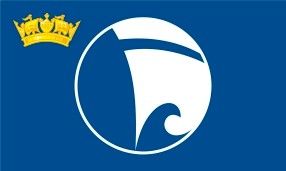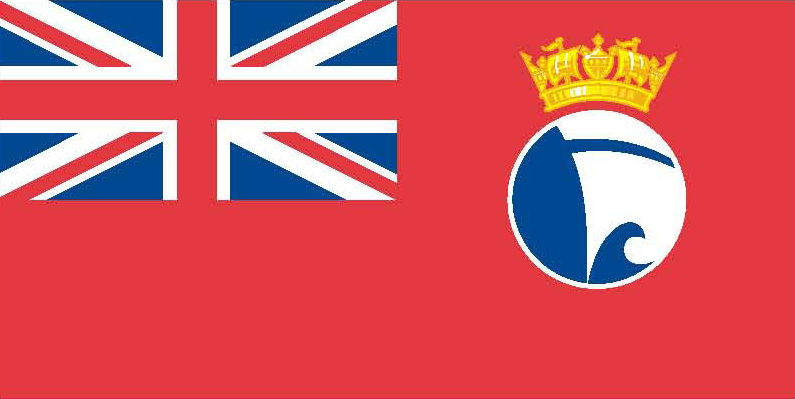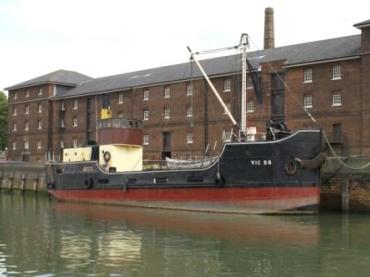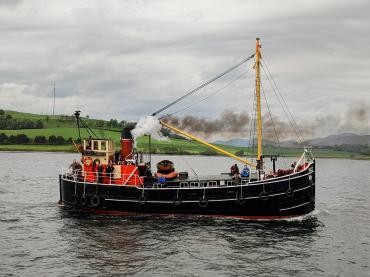Previous names
- 1940 VIC 18
Details
Construction
Dimensions
History
Built in 1942 by J. Hay & Sons, Kirkintilloch, SPARTAN is the only surviving Scottish-built ‘puffer’, a type of steam-powered cargo vessel first built in the 1850s for use on the Clyde and Forth Canal.
SPARTAN was the first vessel in the museum’s collection when it was established in 1983. The term ‘puffer’ came from the characteristic puffs of steam – and accompanying sound – from the early single-stroke steam engines. The name stuck despite only the earliest examples of this type used this engine. Sea-going puffers were being built by the 1870s, supplying an essential link to the maritime communities of Scotland. Carrying all manner of cargoes, they traded mainly in the Firth of Clyde and the Scottish Highlands and Islands. Their flat-bottomed hulls mean puffers were able to beach and unload their cargoes at low tide, not relying on piers.
SPARTAN has been much altered since original construction, built as a waterways puffer with riveted steel plating and pitch-pine deck. At a length of 66ft SPARTAN was the longest a canal dock would allow. At the outbreak of the Second World War, the Ministry of War Transport required a fleet of small cargo boats, for servicing Naval ships and installations on Scotland’s west coast. Rather than designing a new vessel type, it was decided that the 66ft Clyde puffer type made an ideal model for the basis of a fleet. A large number of these ‘Victualling Inshore Craft’ – known as the VIC series – were built, most of them constructed south of the border. SPARTAN, or VIC 18 as it was known, was an exception. VIC 18 remained in Naval service until 1946 when it was laid up.
SPARTAN was reacquired by Hay’s in 1946 and converted to join their fleet of puffers, before being re-registered as ‘Spartan’. The vessel's steam engine was replaced by a Scania diesel in 1961 and remained in use as a cargo vessel until 1980. Eventually it was handed over to the West of Scotland Boat Museum Association (the precursor of the Scottish Maritime Museum) in 1982. With growing competition from subsidised road haulage and ferry services, and the islands using less coal, operators began to go out of business and by the mind 1990s the puffer trade was no more.
Key dates
-
1940
Built by J Hay & Sons, Kirkintilloch for the Admiralty
-
1946
Sold to her builders and renamed SPARTAN
-
1946-80
Carried coal Moreand general cargoes around the Firth of Clyde as far as Mull, Iona and Islay
-
1961
Motorised with a Scantia diesel and remained in the puffer trade
-
1974
Acquired by the Glenlight Shipping Company
-
1980
Withdrawn from service and laid up at Bowlingham
-
1982
Acquired by the West of Scotland Boat Museum Association
-
1983
Became a museum exhibit at the Scottish Maritime Museum, Irvine, North Ayrshire
-
1990s
Appeared in the series of Para Handy tales
-
2011
Undergoing restoration
-
2013
Afloat at the Scottish Maritime Museum, Irvine, as an exhibit
-
2020
Received Flagship award of £250, for being NHS-UK regional flagship Scotland West 2020
Grants
-
2020
Received Flagship award of £250, for being NHS-UK regional flagship 2020
Sources
Brouwer, Norman J, International Register of Historic Ships, Anthony Nelson, Edition 2, 1993
Classic Boat: Cajuns on the Loch, December 1995
Ships Monthly: Clyde 'Puffers' - a review of their rise and decline, May 1981
Ships Monthly: Clyde 'Puffers' - a review of their rise and decline (continued), June 1981
Ships Monthly: The Story of the VICs - Part 2: Post War Service, August 1981
Ships Monthly: The Story of the VICs, July 1981
Own this vessel?
If you are the owner of this vessel and would like to provide more details or updated information, please contact info@nationalhistoricships.org.uk






















